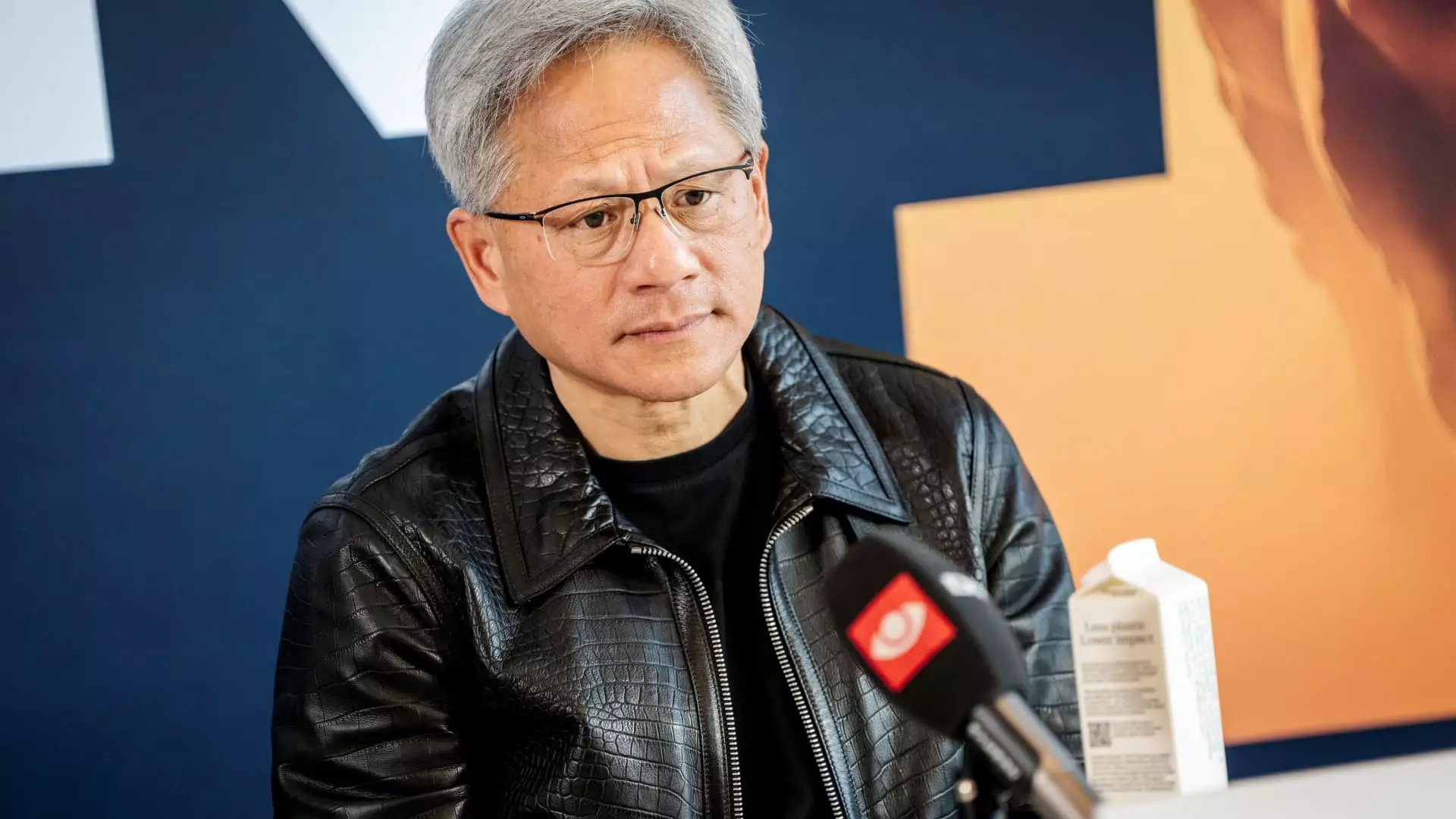Nvidia has established itself as a titan within the artificial intelligence (AI) chip market, securing an impressive 80% share in an industry characterized by rapid growth. As businesses and developers increasingly pivot toward generative AI applications, Nvidia’s Graphics Processing Units (GPUs) have become the preferred tools for both creating and deploying these sophisticated technologies. With this dominance, investors eagerly await Nvidia’s third-quarter earnings report, which promises critical insights into the company’s ability to maintain momentum as the AI boom matures. The implications of this report go beyond mere financial performance; they signal Nvidia’s potential to navigate a sector that could well redefine the technological landscape in the coming years.
Analysts’ Optimism and Concerns
Recent analyses reflect a cautious yet optimistic sentiment surrounding Nvidia’s future. HSBC analyst Frank Lee articulated a viewpoint that Nvidia is venturing into “uncharted territory,” attempting to sustain growth amidst a staggering market capital valuation of $3.5 trillion. Lee’s projections suggest a bright future, indicating no signs of a slowdown and potential upside in data center momentum as we approach 2026. Such forecasts are pivotal; they bolster investor confidence and signal to the market that Nvidia may be poised for continued expansion.
However, the focus of upcoming discussions will be centered around the demand for Nvidia’s next-generation chip, Blackwell, which has just begun shipping to high-profile clients such as Microsoft, Google, and OpenAI. Blackwell represents a critical component of Nvidia’s growth strategy, and its performance in the marketplace could significantly influence the company’s trajectory. CEO Jensen Huang’s insights during the earnings report could provide essential clarity regarding Blackwell’s reception and any operational challenges, including reported overheating issues with certain systems utilizing the chip.
Over the past several months, Nvidia’s stock has experienced a meteoric rise, soaring nearly 19% since its last earnings report. This growth is impressive, particularly as the share price has ballooned eightfold since the debut of ChatGPT in late 2022. While the rapid ascent of the stock is driven by robust sales figures and increasing margins, it also reflects the market’s reaction to Nvidia’s innovative capacity and its ability to set industry trends. However, potential investors must remain cautious; a high forward price-to-earnings ratio underlines the risks associated with overvalued stocks in an unpredictable market.
As Nvidia’s sales surged in the most recent quarter, the company reported an extraordinary 122% growth. While this figure is certainly remarkable, it also highlights a trend of deceleration, as this growth rate is significantly lower than the year-over-year increases reported earlier in the year. This slowing growth could create tension in investor expectations, especially with projected revenues approaching $33.12 billion for the next quarter, signifying an 83% annual growth rate. The acute contrast in this growth narrative necessitates scrutiny; as Nvidia escalates its scale, sustaining such growth may become increasingly challenging.
Interestingly, Nvidia’s data center business now comprises nearly 88% of its total sales, overshadowing the legacy gaming division, which includes chip production for companies like Nintendo. Despite a forecasted increase of only 6% in the gaming segment, the real excitement lies within the data center domain, where annual growth rates are expected to continue surging. Analysts point to the automotive sector as a burgeoning opportunity, predicting significant growth despite its relatively minor contribution to total sales at this time. The chipmaker’s foray into automotive technology, particularly for electric vehicles, may eventually prove vital as global industries pivot toward clean energy solutions.
The crux of Nvidia’s ongoing success hinges on the strength of its data center business and the firm’s ability to keep pace with burgeoning demand in this arena. Investments in AI and machine learning are set to escalate, and companies that lead in providing reliable processing power – like Nvidia – are primed to capitalize. As the market prepares for Nvidia’s upcoming earnings report, all eyes will be on CEO Jensen Huang’s guidance regarding future demand. If Huang can assure investors of sustained growth, Nvidia’s position as a leader in the AI chip sector will undoubtedly strengthen, securing its footing in a competitive landscape.


Leave a Reply